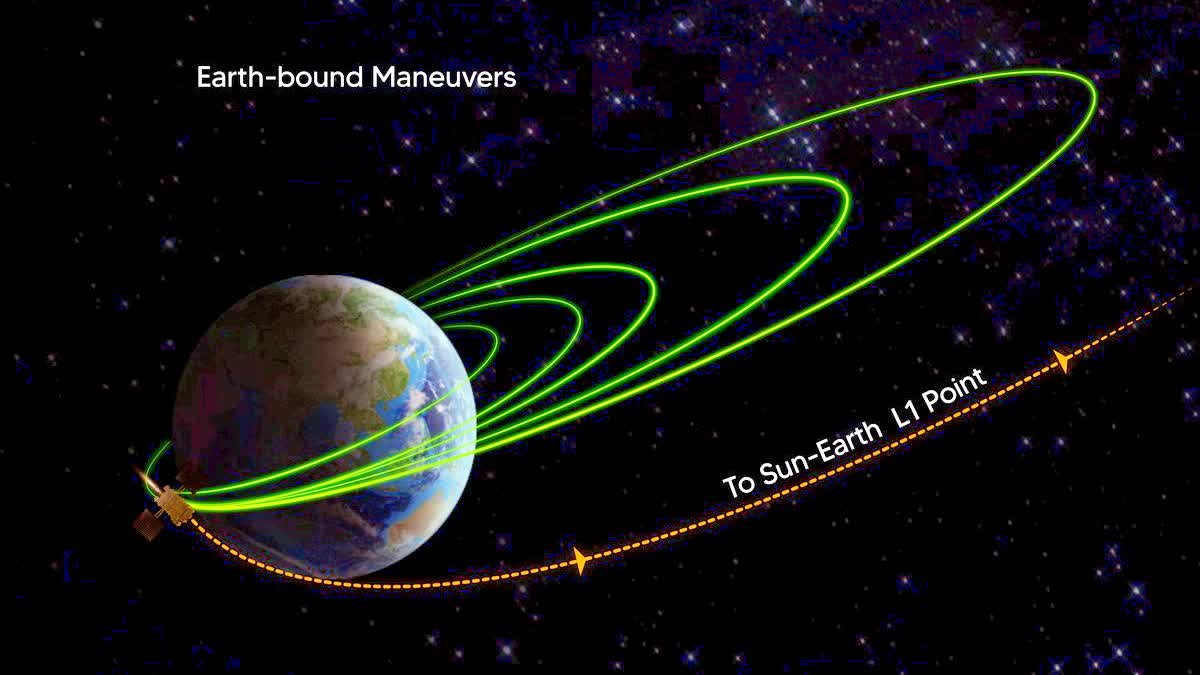Bangalore: The Indian Space Research Organisation (ISRO) has announced Tuesday that its maiden solar mission — Aditya-L1 — has performed the Trans-Lagrangean Point 1 Insertion (TL1I) manoeuvre successfully and the spacecraft is now on a trajectory that will take it to the Sun-Earth L1 point.
ISRO also informed that it marked the fifth consecutive time that the ISRO had successfully transferred an object on a trajectory toward another celestial body or location in space.
A post on the ISRO official handle on social media platform X read, “Aditya-L1 Mission | Off to Sun-Earth L1 point | The Trans-Lagrangean Point 1 Insertion (TL1I) manoeuvre is performed successfully. The spacecraft is now on a trajectory that will take it to the Sun-Earth L1 point. It will be injected into an orbit around L1 through a manoeuvre after about 110 days. This is the fifth consecutive time ISRO has successfully transferred an object on a trajectory toward another celestial body or location in space.”
-
Aditya-L1 Mission:
— ISRO (@isro) September 18, 2023 " class="align-text-top noRightClick twitterSection" data="
Off to Sun-Earth L1 point!
The Trans-Lagrangean Point 1 Insertion (TL1I) maneuvre is performed successfully.
The spacecraft is now on a trajectory that will take it to the Sun-Earth L1 point. It will be injected into an orbit around L1 through a maneuver… pic.twitter.com/H7GoY0R44I
">Aditya-L1 Mission:
— ISRO (@isro) September 18, 2023
Off to Sun-Earth L1 point!
The Trans-Lagrangean Point 1 Insertion (TL1I) maneuvre is performed successfully.
The spacecraft is now on a trajectory that will take it to the Sun-Earth L1 point. It will be injected into an orbit around L1 through a maneuver… pic.twitter.com/H7GoY0R44IAditya-L1 Mission:
— ISRO (@isro) September 18, 2023
Off to Sun-Earth L1 point!
The Trans-Lagrangean Point 1 Insertion (TL1I) maneuvre is performed successfully.
The spacecraft is now on a trajectory that will take it to the Sun-Earth L1 point. It will be injected into an orbit around L1 through a maneuver… pic.twitter.com/H7GoY0R44I
Aditya-L1 is the first Indian space-based observatory to study the Sun from a halo orbit around first Sun-Earth Lagrangian point (L1), located roughly 1.5 million km from earth, which is about one per cent of the Earth-Sun distance.
The Sun is a giant sphere of gas, and Aditya-L1 would study the outer atmosphere of the Sun. It will neither land on the Sun nor approach the Sun any closer.
Since its launch, Aditya-L1, during its journey around the Earth, underwent four Earth-bound manoeuvres on September 3, 5 ,10 and 15 respectively, during which it gained the necessary velocity for its further journey to L1.
Upon arrival at the L1 point, another manoeuvre binds Aditya-L1 to an orbit around L1.
The satellite spends its whole mission life orbiting around L1 in an irregularly shaped orbit in a plane roughly perpendicular to the line joining the Earth and the Sun.
Aditya-L1 is expected to arrive at the intended orbit at the L1 point after about 127 days, ISRO had said soon after the launch.
ISRO's Polar Satellite Launch Vehicle (PSLV-C57) on September 2 successfully launched the Aditya-L1 spacecraft, from the Second Launch Pad of Satish Dhawan Space Centre (SDSC), Sriharikota.
After a flight duration of 63 minutes and 20 seconds that day, Aditya-L1 spacecraft was successfully injected into an elliptical orbit of 235x19500 km around the earth.
According to ISRO, a spacecraft placed in the halo orbit around the L1 point has the major advantage of continuously viewing the Sun without any occultation /eclipses. This will provide a greater advantage of observing the solar activities and its effect on space weather in real time.
-
#AdityaL1 has commenced collecting #scientificdata: #ISRO
— ETV Bharat (@ETVBharatEng) September 18, 2023 " class="align-text-top noRightClick twitterSection" data="
https://t.co/3M3XyXEsAE
">#AdityaL1 has commenced collecting #scientificdata: #ISRO
— ETV Bharat (@ETVBharatEng) September 18, 2023
https://t.co/3M3XyXEsAE#AdityaL1 has commenced collecting #scientificdata: #ISRO
— ETV Bharat (@ETVBharatEng) September 18, 2023
https://t.co/3M3XyXEsAE
Aditya-L1 carries seven scientific payloads indigenously developed by ISRO and national research laboratories including Indian Institute of Astrophysics (IIA), Bengaluru, and Inter University Centre for Astronomy and Astrophysics (IUCAA), Pune.
The payloads are to observe the photosphere, chromosphere and the outermost layers of the Sun (the corona) using electromagnetic and particle and magnetic field detectors. (with Agency inputs)



